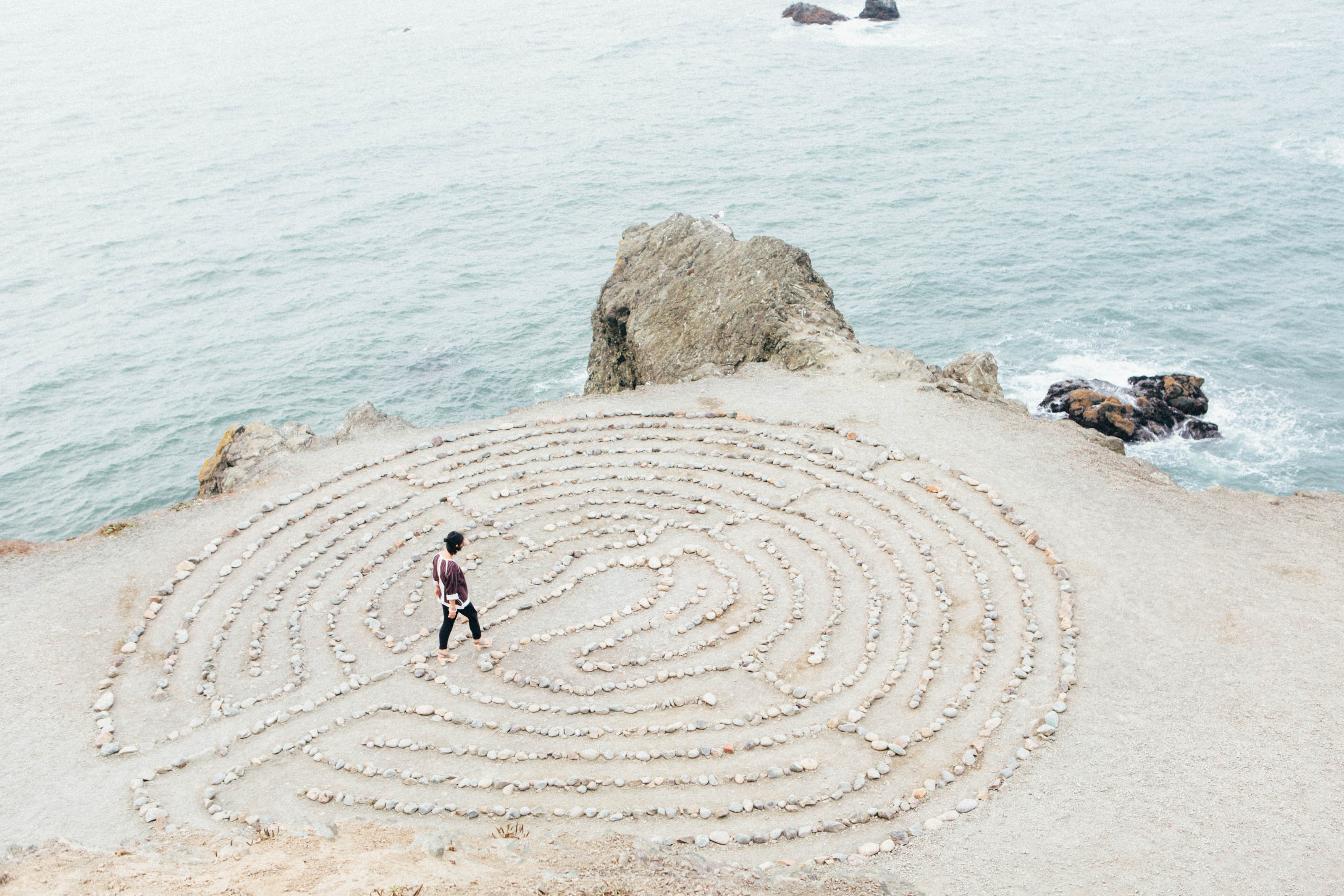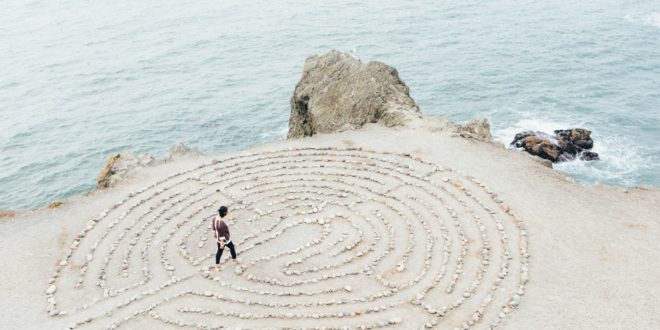The world grows daily busier, and so do our minds. Our brains race with each new social media posting, text, message, phone call. Our digital diaries are full to capacity. There are bills to pay, grandchildren to mind, lawns to mow, guests to entertain. Even pleasurable pursuits occupy the tiny spaces left – the overseas holiday must be organised, the wedding anniversary planned, the next Netflix movie hunted out. There is simply no end to what we can occupy ourselves with. If this sounds like you, then it’s time to hunt out a traditional, meditative labyrinth – and you’ll be surprised to find just how many there are in New Zealand.

What is a meditative labyrinth?
Unlike the labyrinths we associate with mythology, where complex, claustrophobic, panic-evoking, maze-like trails eventually lead to an encounter with a terrifying monster, meditative labyrinths are restful, calming, and so simple to follow. Just take the simple, uncomplicated, non-branching path beneath your feet, and you will very slowly be led to a central point, and then back out again the same way. You don’t have to make any decisions as to which way to turn.
Although labyrinths are often constructed in churches, they actually pre-date Christianity. Some non-Christian labyrinths took the form of confusing paths winding through dark caves to significant features such as a painting. Others served as initiations where one traversed a series of passages to symbolically travel toward rebirth. When churches adopted labyrinths, they were originally designed as a way for believers to make a pilgrimage without the huge costs associated with making an actual visit to a holy site. These meditative labyrinths were constructed on the floors of cathedrals or outside in churchyards. Some were created using stepping stones; others were painted onto stone floors or outlined with inlaid stone or tiles.
Today, many faiths (and none) have adopted the labyrinth as a way to seek calm, find god, or simply to clear the mind of everyday stresses and concerns. The labyrinth walker looks down at the path and very slowly shuffles towards the central point where they rest for a time, considering their small journey. As they return, they symbolically carry back to the outside world, all they have gained from the experience.
Visit labyrinths in New Zealand
Auckland
A labyrinth can be found at the west end of Saint Columba Church, Grey Lynn. It is surrounded by gardens and is always open to the public.
This beautiful, outdoor labyrinth is constructed from river pebbles and terracotta tile. It built to assist anyone who wishes to uses it for quiet contemplation, and especially for the healing of the mind. It was opened in 2014 and was funded by bequest and individual donations You can find it in the grounds of Johnsonville Uniting Church’s Terrace Centre 18 Doctor Taylor Terrace, Johnsonville.
Nelson
Look for this labyrinth, painted on the concrete floor of Nelson Cathedral’s eastern transept. You will often find tourists enjoying the quiet time it offers. The cathedral is located in Trafalgar Square, and is open from 8am-5pm daily. If a service is in progress, be mindful of the need for quiet.
Motueka
St Thomas’s Church grounds offer a quiet and peaceful labyrinth in a corner of its grounds which is open to the public. Look for it at 101 High Street
Motueka.
Create your own
Once you have visited an enjoyed a labyrinth, you may want to create your own temporary one. You can do this on the beach using a garden rake to mark a path in the sand, or driftwood or shells to outline a path. Labyrinths can also be mown into lawns or raked into a gravel driveway.
Look here for more labyrinths to visit.









Join the Discussion
Type out your comment here:
You must be logged in to post a comment.